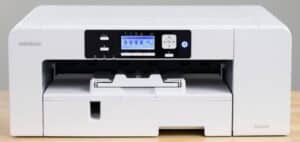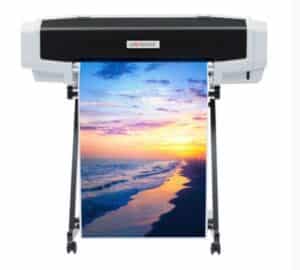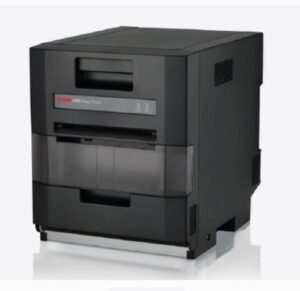Thermal Dye Sublimation Printers are an excellent option for those who are looking to print high-quality photographs in a convenient and efficient manner. They are commonly used by photographers, artists, and graphic designers, and they offer a wide range of benefits that make them a popular choice among professionals and amateurs alike. Let’s explore the benefits of Thermal Dye Sublimation Printers and why they are worth considering for your printing needs.
What are Thermal Dye Sublimation Printers?
Thermal Dye Sublimation Printers use heat to transfer dye onto paper or other materials. The process involves heating the dye so that it vaporises, and then it is transferred onto the printing material, where it solidifies. The result is a high-quality image that is vibrant and long-lasting. Thermal Dye Sublimation Printers are typically more expensive than traditional inkjet printers, but they offer a number of benefits that make them a worthwhile investment.
Benefits of Thermal Dye Sublimation Printers
-
High-Quality Prints
One of the most significant benefits of Thermal Dye Sublimation Printers is that they produce high-quality prints. The process of sublimation results in a more vibrant and detailed image than traditional printing methods, making it an excellent option for printing photographs, artwork, and graphics. The prints produced by Thermal Dye Sublimation Printers are also long-lasting, with the colour and quality remaining consistent over time.
-
Convenience
Thermal Dye Sublimation Printers are also incredibly convenient. They are designed to be easy to use, with many models featuring user-friendly interfaces that make printing simple and straightforward. They are also fast, with many models capable of producing prints in just a few seconds. This makes them an excellent option for professionals who need to produce a large number of prints quickly.
-
Versatility
Another benefit of Thermal Dye Sublimation Printers is their versatility. They can print on a wide range of materials, including paper, fabric, and even metal. This makes them an excellent option for a variety of printing projects, from producing high-quality photographs to creating custom t-shirts and other merchandise.
-
Cost-Effective
While Thermal Dye Sublimation Printers are more expensive than traditional inkjet printers, they are also more cost-effective in the long run. The prints produced by Thermal Dye Sublimation Printers are long-lasting and durable, meaning that you won’t need to replace them as frequently as prints produced by other methods. This can save you money in the long run, especially if you need to produce a large number of prints.
-
Environmentally Friendly
Thermal Dye Sublimation Printers are also more environmentally friendly than traditional printing methods. The process of sublimation uses less ink and produces less waste, making it a more sustainable option for printing. Additionally, many models of Thermal Dye Sublimation Printers use energy-efficient technology, making them a more eco-friendly choice.
Contact our Team at Australian Photo Supplies
Thermal Dye Sublimation Printers offer a range of benefits that make them an excellent option for those who need to produce high-quality prints quickly and efficiently. They produce vibrant, long-lasting prints that are perfect for a variety of applications, and they are incredibly easy to use. While they may be more expensive than traditional inkjet printers, they are also more cost-effective in the long run, making them a worthwhile investment for professionals and amateurs alike. Talk to our Team at Australian Photo Supplies for more information.
Printing Made Easy; The Benefits of Thermal Printing
Thermal printing has never been more popular than it is today! Designed with barcoding technology, thermal printers are becoming paramount for every industry today! And when it comes to the retail world, thermal printing technology is more of a boon. In order to keep goods monitored and moving, producing receipts and invoices was necessary. But with standard printers, it was a real struggle! The advent of thermal printers thus brought the ease of creating labels and organising inventory and shipping items.

Pondering what makes these printers an excellent asset for business? Australian Photo Supplies sensed the necessity of informing about these printers and drafted a blog. So let’s embark on this inked journey towards the “Thermal Printing world.”
For starters, let’s learn about two major types of printers,
Thermal Printers vs Digital Printers
Digital Printers
Digital printers produce digital images through digital devices onto paper. These printers spray the coloured droplets of ink onto a piece of paper, combined to form an image or text. The size and colour of these droplets might vary to produce sharp, photo-realistic printouts.
Printer inks or toner cartridges (powder-based ink) are a must to generate printouts through these printers. These printers are generally used in homes and offices to create professional-quality prints. The two most prominent examples of digital printers are;
- Inkjet printers use tiny ink droplets to produce high-resolution images and text.
- Laser printers use toner cartridges to create sharp, precise text and graphics.
Thermal printer
A thermal printer is a type of printer that uses heat to create an image on paper. It works by heating thermal paper, which has a coating of heat-sensitive material. This induces the thermo-sensitive material to react and create an image. Thermal printer is used for printing receipts, shipping labels, barcodes, and other labels. From big to small businesses, this nifty little device is used everywhere.
To explain this in simple terms, let’s take a real-life example;
Imagine you’re at a checkout counter, completing your payments for some items you have in the cart. The cashier scans your items and prints a receipt for you to sign. Yeah, that very receipt comes out of a thermal printer!
Unlike digital printers, thermal printers don’t spatter liquid ink with a nozzle to create printouts. Instead, these printers use small heating elements to activate or transfer colour pigments.

Types of Thermal printers
Two main types of thermal printers are direct thermal and thermal transfer.
- Thermal-Transfer Printers
- Direct-Thermal Printers
Thermal-Transfer Printers
Thermal-transfer printers rely on a print head applying heat directly to a ribbon to create an image. The thermal ribbons are made of either resin, wax, resin, or sometimes with an amalgam of both. Resin ribbons give resistance against chemical exposure and extremely harsh temperatures. This provides a high-quality printout without any smudge or fade, even after being exposed to harsh conditions.
Thermal-Transfer: Printing shipping labels
The printout made with thermal-transfer printing outlasts all other methods of printing. Thermal printers help in printing labels that can withstand difficult laboratory conditions such as;
- High pressure during sterilisation
- Chemical exposure (toluene, alcohol, and other solvents).
Direct-Thermal Printers
The heated thermal print head passes over the thermochromic paper in this printer. The print head then touches the paper, and the coating darkens—leaving behind the printed image. Direct thermal printers use heat-sensitive paper that changes colour when heated. These printers are ideal for printing general-use labels.
Label Printer Without Ribbon
A direct thermal printer uses heat to generate a printout, but instead of using a ribbon as a source, it uses ink-like material that changes colour when heat is applied. The printer’s “thermal head” produces heat directly onto the label through a “spring,” which drives pressure to the thermal head as the platen roller passes the labels through.

The process of Thermal Printing
Thermal printing is a digital process that produces a printed image through a device. The process begins with passing a thermal paper (thermochromic coating) over a print head with very fine heated parts. The thermochromic layer then turns the paper black on the heated portions creating a desirable image. Thermal printing is a process where heat reacts either with labels or with a ribbon to print the desired text and images in a jiffy.
Now that you know what they are and how they work, Australian Photo Supplies now come to the most exciting part, which is…
Thermal printers: an asset for businesses
For starters, they’re super fast!
Not kidding! They can print out a receipt in just a few seconds. And since they use heat instead of ink cartridges, they’re easy to maintain and have a lower cost of ownership. Businesses with a high number of inventory labels can use thermal printing.
Printing shipping labels
Thermal printers aren’t just for receipts! They can also print shipping labels, tickets, barcodes, and medical imaging. Their versatility and speed make them a popular choice among all industries across the globe. Retailers can use thermal printers for printing shipping labels when there’s high demand. At hectic Christmas or New Year times, these printers are helpful.
Since they are more durable than regular ink labels, one can use them on any surface without fear of them wearing off. The durability, speed, convenience, affordability, versatility, and colour options make these printers the smart printing option for all.

Industries opting for thermal printing
Transportation and Logistics
Transportation and logistics are the leading industries approaching thermal printing technology. From airlines, distribution, mail, packaging, freight delivery and railways, thermal printers cover all.
Manufacturing
These printers are a great asset in aerospace, fashion or consumer electronics. Manufacturing areas, like warehousing, inventory control, and parts picking, are opting for thermal printers.
Healthcare
Many healthcare organisations use thermal printers to print labels and tags. Print smart labels to track medical equipment, bed utilisation, and asset allocation; they are helpful.
Retail
This industry uses this printing technology to offer customers a rapid and efficient point of sale. Since POS services have been a priority for retailers, thermal printers are in demand.

The Takeaways regarding Thermal Printing
When your business and product inventory expands, you reach a level when standard inkjet and laser printers may not be able to handle the load. That’s when you need thermal printers to run your operations smoothly. Many players are showcasing thermal printing technology to enhance the printing process.
Should you need assistance with direct thermal print labels or advice on purchasing a thermal printer, contact our Team
Here’s what Australian Photo Supplies has to give you;
KODAK 6900 Photo Printer – APAC: a reliable thermal printer in today’s market for panoramic thermal prints. Also, you can explore our store for more thermal printing supplies.

